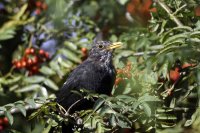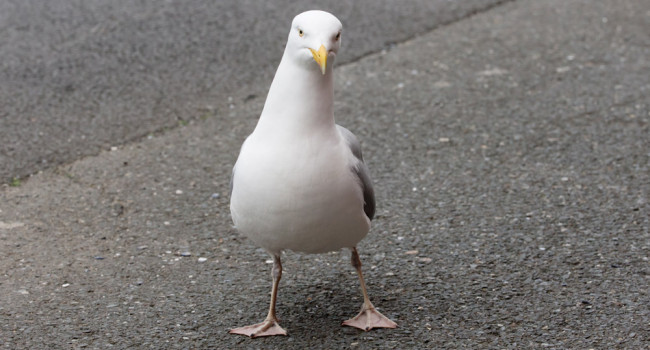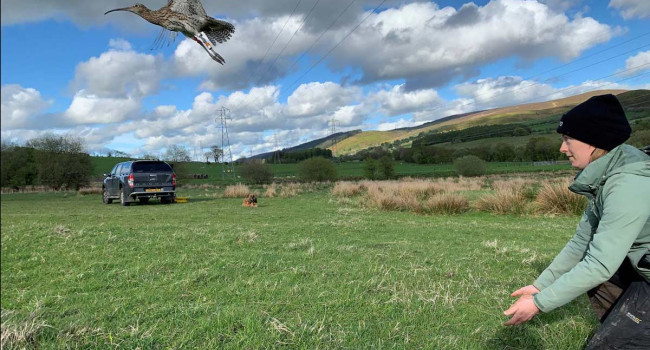Bye-bye Blackbird
01 Sep 2013 | No. 2013-29
A question that the British Trust for Ornithology’s (BTO) Garden Ecology Team hears a lot at this time of year is ‘Where have all my birds gone?’ One of the most conspicuous disappearances from British gardens at the end of the summer is that of the Blackbird.
more absent from people's gardens
For a bird that features in the majority of British gardens, the sudden loss of ‘your’ local Blackbird must come as quite a shock. But all is well. As results from the BTO’s weekly Garden BirdWatch (GBW) survey show, it happens every year – there is always a pronounced ‘trough’ between September and October when Blackbirds are more absent from people’s gardens.
So where are they going? The answer is two-fold. Your Blackbirds may have been looking a bit tatty towards the end of the summer because they have been frantically feeding their chicks, squeezing in and out of hedges. At the end of a busy breeding season they moult into new feathers. Individuals tend to hide away while they do this in order to avoid predators as they expend a lot of energy during the moulting process and are less manoeuvrable on the wing.
The second reason for their absence is that Blackbirds head out of gardens to take advantage of the natural food bounty in the wider countryside. During the autumn, Blackbirds feed up for the winter and the abundance of natural fruits, like blackberries, provides what they need. This use of natural fruits during the autumn has also been reflected in the GBW results from 2012. There were many more Blackbirds seen in gardens in autumn 2012, echoing the poor berry crop of last year.
You may miss your Blackbirds but they will start to head back into your gardens later on in the year. However, they may not return alone. Clare Simm, of the BTO Garden Ecology team, explains why: "When our British Blackbirds return to our gardens in the winter, they are often joined by immigrants. Large numbers of Blackbirds migrate from Sandinavia and continental Europe to spend the winter here in Britain and Ireland. A few of our Blackbirds migrate too, but generally only moving within Britain, often moving south and west during the autumn, pursuing the milder weather."
For more information on this, or on how to take part in the BTO’s Garden BirdWatch, email gbw [at] bto.org, telephone 01842 750050 or write to GBW, BTO, The Nunnery, Thetford, Norfolk, IP24 2PU.
Notes for Editors
- The BTO Garden BirdWatch is the only nationwide survey of garden birds to run weekly throughout the year, providing important information on how birds use gardens, and how this use changes over time. Currently, some 14,500 people take part in the project. The project is funded by participants’ contributions and is the largest year-round survey of garden birds in the world. For more information see www.bto.org/gbw.
- The BTO is the UK's leading bird research charity. A growing membership and up to 60,000 volunteer birdwatchers contribute to the BTO's surveys, collecting information that underpins conservation action in the UK. The BTO maintains a staff of 100 at its offices in Thetford, Stirling, Bangor (Wales) and Bangor (Northern Ireland), who analyse and publicise the results of surveys and projects. The BTO's work is funded by BTO supporters, government, trusts, industry and conservation organisations. www.bto.org
Contact Details
Clare Simm
(GBW Development Officer)
Office: 01842 750050
(9am to 5.30pm)
Email: clare.simm [at] bto.org
Paul Stancliffe
(BTO Media Manager)
Office: 01842 750050
(9am to 5.30pm)
Mobile: 07585 440910 (anytime)
Email: press [at] bto.org
Images are available for use alongside this News Release.
Please contact images [at] bto.org quoting reference 2013-29
The BTO has an ISDN line available for radio interviews.
Please contact us to book an interview
Office: 01842 750050







Share this page